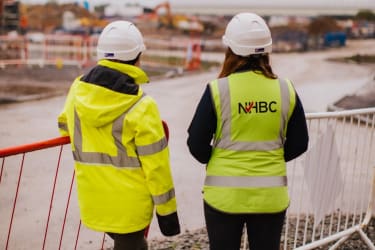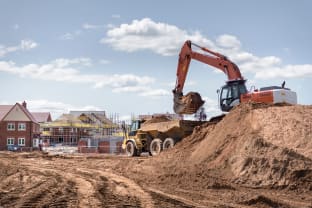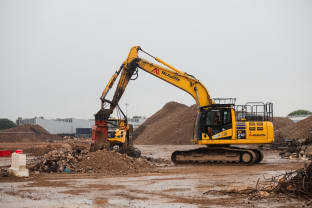
What is land remediation?
Land remediation and ground treatment involve actions taken to address contamination or unsuitable ground conditions, making the land suitable for future use or preventing harm occurring in its current state.
Understanding NHBC's warranty
Established in 1936, NHBC introduced its first two-year building warranty in the 1940s, followed by the 10-year warranty in 1965.
This was the foundation for the current Buildmark policy, which consists of deposit protection, a two-year builder warranty period backed by the NHBC resolution service and eight years’ insurance cover against damage caused by defects in the property’s structure.
In 2005, NHBC introduced Land Quality Service (LQS) to support the house-building industry by de-risking land intended for residential development.
How does Land Quality Service support warranties?
NHBC’s team of specialist geotechnical and geo-environmental engineers thoroughly assesses all types of land at the pre-development stage whether it is a brownfield site, geotechnically challenging land, greenfield or marginal site.
The LQS team provide specialist opinion on land suitability and remediation, ensuring confidence in sites before registration for warranty and supporting compliance with planning conditions.
Land with an NHBC Land Quality Certificate is already de-risked because the LQS team has thoroughly reviewed the investigation, land remediation work proposals and verification works for compliance with NHBC Land Quality Standards.
Karen Thornton, NHBC’s Land Quality Service manager, emphasised the importance of involving LQS early in the development process, “Engaging early will provide the best results and allow the team to deliver data-led risk management at the pre-development stage. This can potentially increase and retain land value, offering a greater return on investment and saving time and money by understanding and addressing problems before they occur.”
Land Quality Service stages of assessment
NHBC’s Land Quality Service is split into three stages in line with NHBC Standards 4.1.
Stage one - Hazards Identification/Evaluation
The first stage is a desk study appraisal of the findings of site investigations to ensure important hazards are identified and adequately assessed and can be used to inform future design needs.
Stage two - Managing the Risks
The Second Stage, ‘Managing the Risk’ involves judging the suitability of the chosen remedial or earthwork solutions against NHBC Standards to address or mitigate hazards.
At the second stage the proposal is reviewed more thoroughly, particularly the foundation approach and the compatibility of solutions. Groundworks solutions and any other matters that might be impacted are considered and risks are reviewed.
Stage three - Documentation and Verification
The third and final stage confirms that the stated remedial works have achieved their pre-agreed objectives and that the evidence demonstrates compliance with NHBC Standards. LQS specialist engineers will visit at key milestones during the assessment of the works, but the service can be flexible to meet the needs of specific projects.
Achieving Land Quality Service certification
The certificate will display which of the three stages of the service has been provided and what phase of development the land has reached. It also gives further details of the assessment, including the specific foundation system considered, other workable solutions and any outstanding matters that would need to be resolved before or during development.
Karen Thornton, NHBC’s Land Quality Service manager, explained “My team not only delve into the details to highlight any possible problems, but they also work in partnership with our customers to ensure workable solutions. This can include specialist opinion on which foundation system is likely to be acceptable, or not, and to detail outstanding issues that would need to be resolved before or during development.”
Latest articles

NHBC and ARL collaborate to deliver successful brownfield webinar examining challenging sites

Why land quality matters in residential development

In conversation with Jamie Bursnell: innovation in house building
